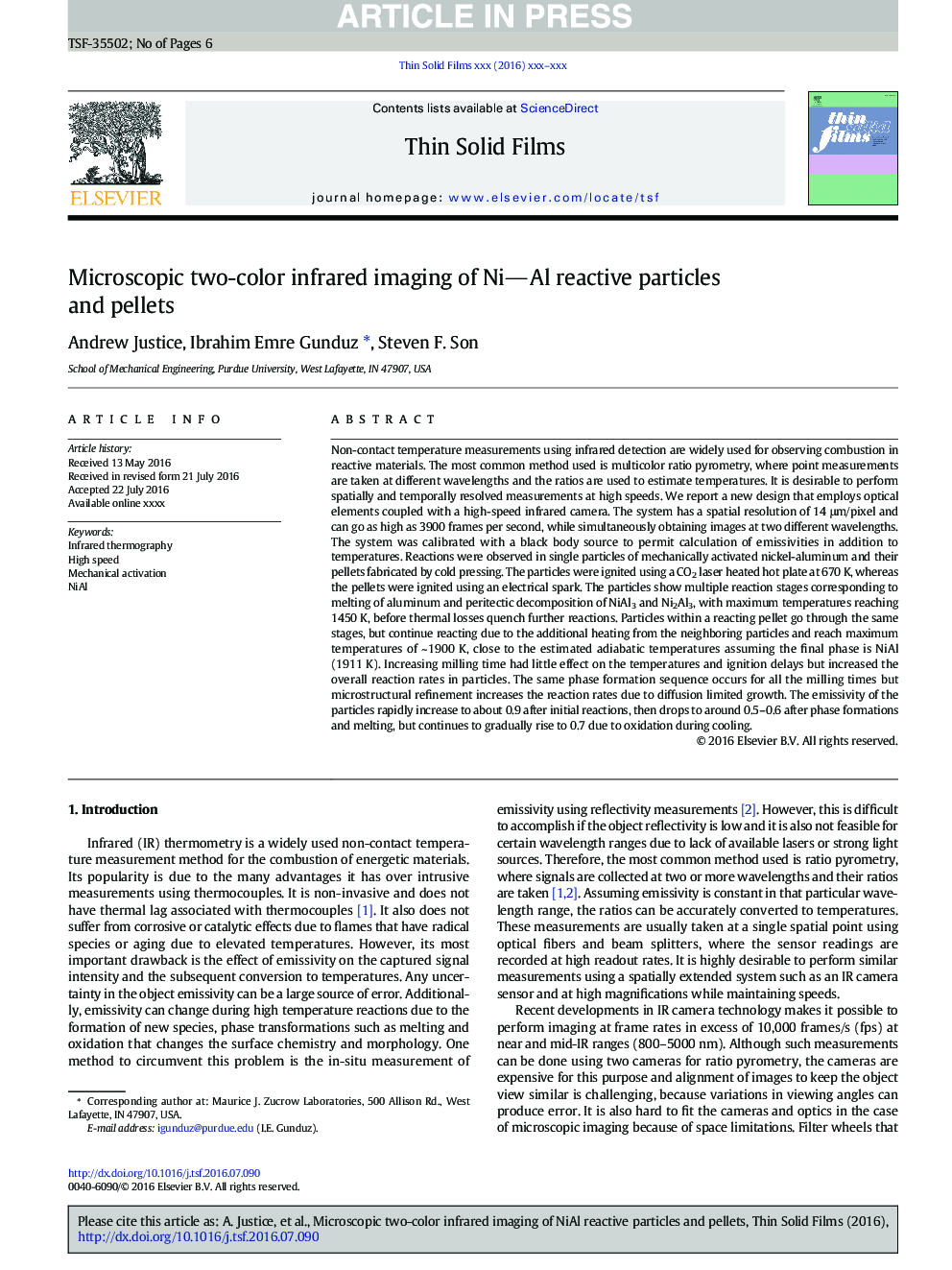| کد مقاله | کد نشریه | سال انتشار | مقاله انگلیسی | نسخه تمام متن |
|---|---|---|---|---|
| 5466443 | 1517992 | 2016 | 6 صفحه PDF | دانلود رایگان |
عنوان انگلیسی مقاله ISI
Microscopic two-color infrared imaging of NiAl reactive particles and pellets
دانلود مقاله + سفارش ترجمه
دانلود مقاله ISI انگلیسی
رایگان برای ایرانیان
کلمات کلیدی
موضوعات مرتبط
مهندسی و علوم پایه
مهندسی مواد
فناوری نانو (نانو تکنولوژی)
پیش نمایش صفحه اول مقاله

چکیده انگلیسی
Non-contact temperature measurements using infrared detection are widely used for observing combustion in reactive materials. The most common method used is multicolor ratio pyrometry, where point measurements are taken at different wavelengths and the ratios are used to estimate temperatures. It is desirable to perform spatially and temporally resolved measurements at high speeds. We report a new design that employs optical elements coupled with a high-speed infrared camera. The system has a spatial resolution of 14 μm/pixel and can go as high as 3900 frames per second, while simultaneously obtaining images at two different wavelengths. The system was calibrated with a black body source to permit calculation of emissivities in addition to temperatures. Reactions were observed in single particles of mechanically activated nickel-aluminum and their pellets fabricated by cold pressing. The particles were ignited using a CO2 laser heated hot plate at 670 K, whereas the pellets were ignited using an electrical spark. The particles show multiple reaction stages corresponding to melting of aluminum and peritectic decomposition of NiAl3 and Ni2Al3, with maximum temperatures reaching 1450 K, before thermal losses quench further reactions. Particles within a reacting pellet go through the same stages, but continue reacting due to the additional heating from the neighboring particles and reach maximum temperatures of ~ 1900 K, close to the estimated adiabatic temperatures assuming the final phase is NiAl (1911 K). Increasing milling time had little effect on the temperatures and ignition delays but increased the overall reaction rates in particles. The same phase formation sequence occurs for all the milling times but microstructural refinement increases the reaction rates due to diffusion limited growth. The emissivity of the particles rapidly increase to about 0.9 after initial reactions, then drops to around 0.5-0.6 after phase formations and melting, but continues to gradually rise to 0.7 due to oxidation during cooling.
ناشر
Database: Elsevier - ScienceDirect (ساینس دایرکت)
Journal: Thin Solid Films - Volume 620, 1 December 2016, Pages 48-53
Journal: Thin Solid Films - Volume 620, 1 December 2016, Pages 48-53
نویسندگان
Andrew Justice, Ibrahim Emre Gunduz, Steven F. Son,